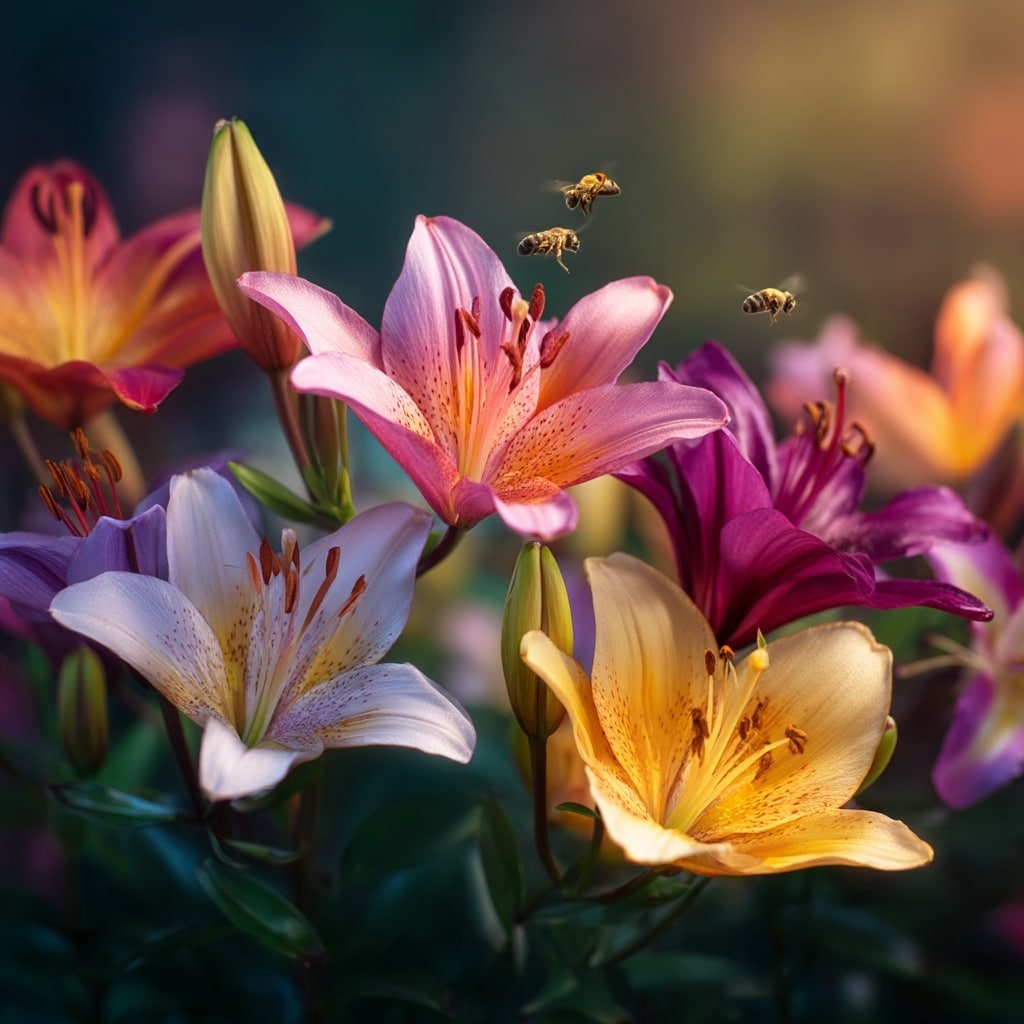Lily flowers are a timeless favorite in both gardens and bouquets, celebrated for their bold colors, elegant shape, and sweet fragrance. Whether you’re dreaming of a vibrant summer display or planning a perennial garden that comes back stronger each year, lilies deliver beauty with surprisingly little effort.
With proper care, lily flowers can thrive indoors or out, offering long-lasting blooms and attracting beneficial pollinators like bees and butterflies. They’re available in a wide range of varieties—from the early-blooming Asiatic lilies to the fragrant Oriental types—making them a versatile choice for gardeners of all skill levels.
In this guide, you’ll learn exactly how to grow and care for lily flowers so they return and bloom beautifully year after year.
Table of Contents
Table of Contents
How and When to Plant Lily Flowers

Planting lily flowers at the right time and in the right way sets the foundation for years of gorgeous blooms. These perennials grow from bulbs and need well-drained, fertile soil to thrive. Choose a location with good air circulation and protection from strong winds—ideally a spot that receives at least six hours of sunlight daily.
You can plant lily bulbs either in the fall, at least four weeks before your area’s first frost, or in the spring after the last frost has passed. Fall planting tends to produce stronger roots and earlier blooms, while spring planting works well in colder climates.
Dig holes two to three times deeper than the bulb’s height—typically 6 to 8 inches—and space bulbs about 8 to 12 inches apart. Always plant them with the pointy side up.
After planting, apply a layer of organic mulch to regulate soil temperature and retain moisture. Water the bulbs thoroughly, then let the soil dry slightly between waterings. Overly soggy soil can lead to bulb rot, so avoid low-lying or swampy areas.
With just a bit of early care, your lily flowers will establish well and reward you with vibrant growth in the growing season ahead.
Planting Lily Flowers Indoors
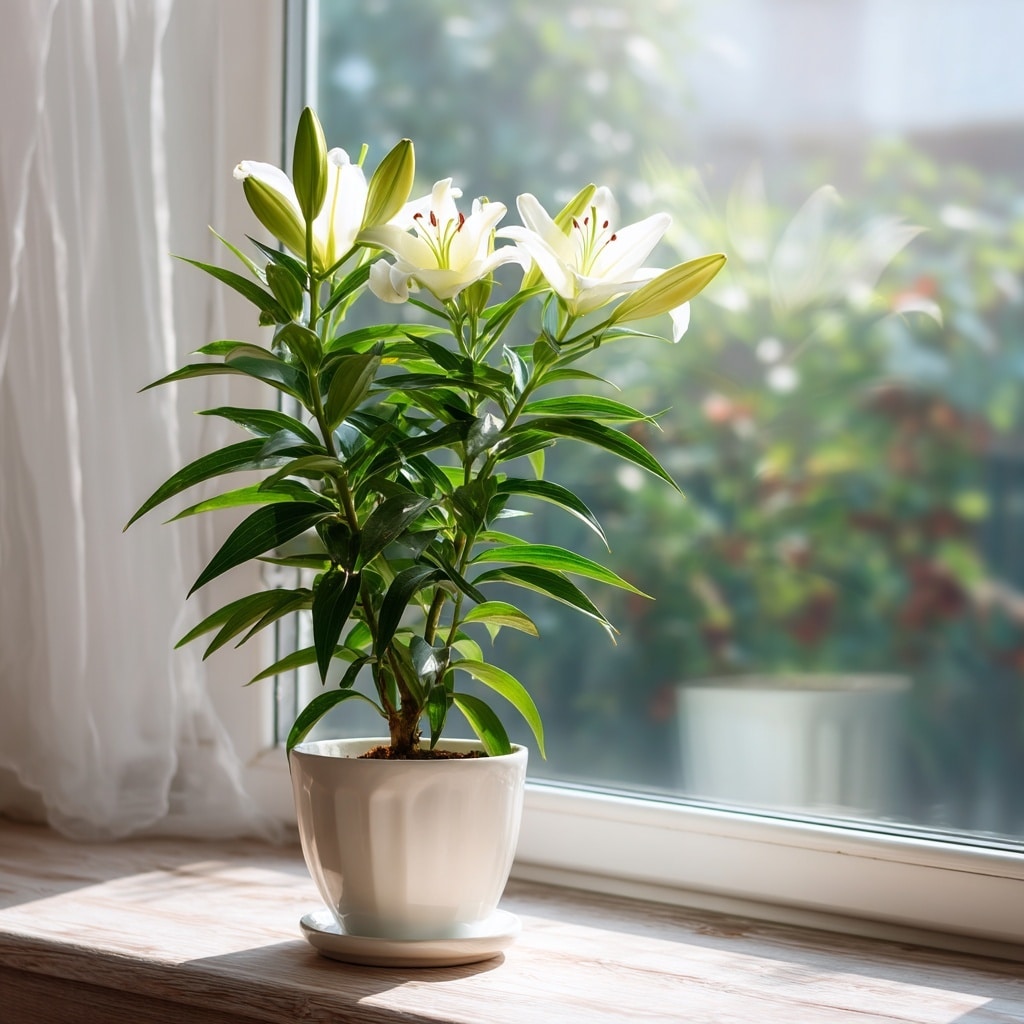
While lily flowers are most commonly seen in outdoor gardens, many varieties grow beautifully indoors with the right setup. Indoor lilies bring elegance and fragrance into your home, especially around holidays like Easter when certain types, such as Easter lilies, are widely available.
To grow lilies indoors, choose a compact variety and a container that provides enough depth for the roots—at least 6 to 8 inches. The pot must have drainage holes to prevent waterlogged soil, which can lead to root rot. Use a well-draining potting mix enriched with compost or organic matter.
Place the pot in a location that receives bright, indirect sunlight for at least six hours a day. A sunny windowsill or a sunroom works best. Water when the top inch of soil feels dry, but avoid overwatering. Lily bulbs are sensitive to excess moisture.
After blooming, allow the foliage to die back naturally. Then, let the plant go dormant by storing the bulbs in a cool, dark place (like a refrigerator without fruit) for about two months. This rest period is essential for the next blooming cycle.
With the right conditions, indoor lily flowers can return year after year—bringing a touch of the garden inside your home.
How to Care for Lily Flowers
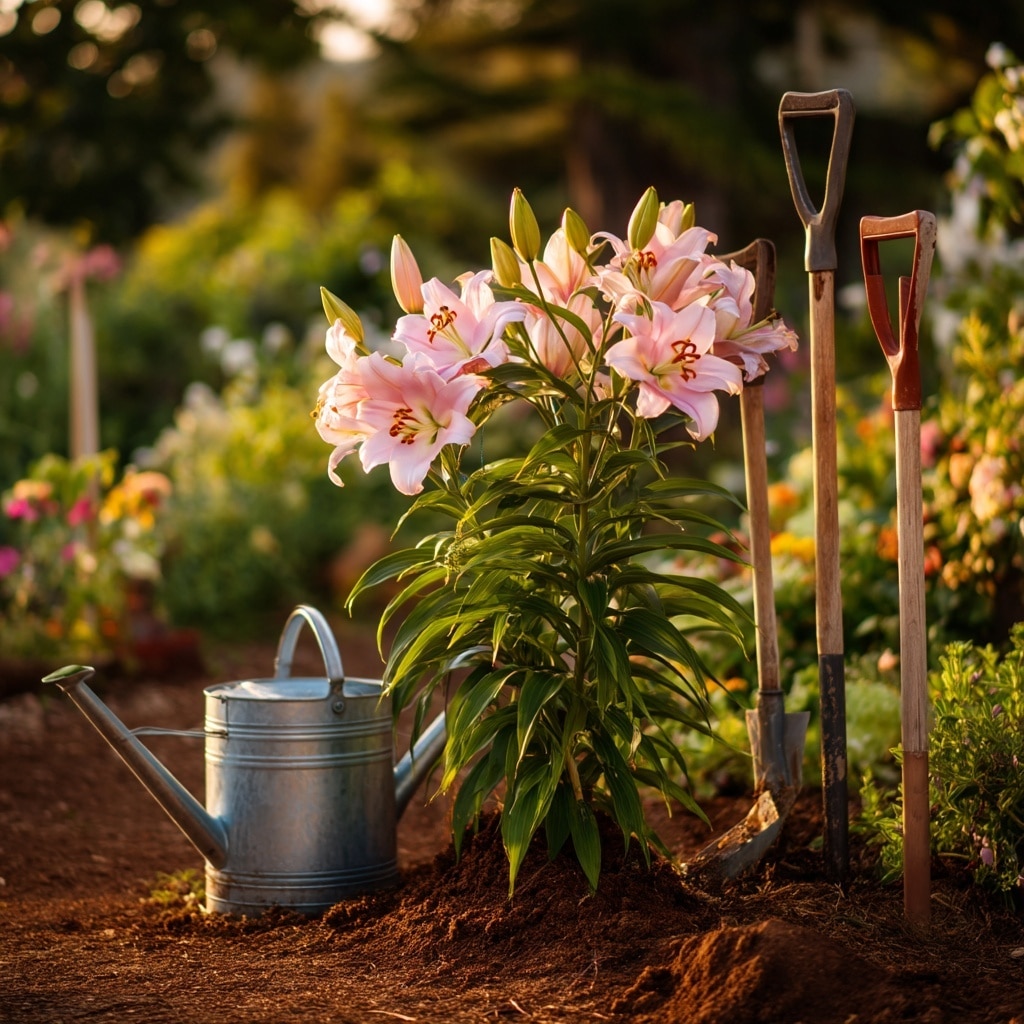
Caring for lily flowers properly ensures they’ll bloom stronger and more beautifully each season. These perennials are relatively low-maintenance, but a consistent care routine goes a long way in helping them thrive.
☀️ Sunlight
Lily flowers need 6 to 8 hours of direct sunlight each day. A spot with morning sun and light afternoon shade is ideal in hot climates. Without enough sunlight, lilies may lean toward the light source or produce fewer blooms.
💧 Watering
Lilies prefer moist but not soggy soil. Water deeply once a week, especially during dry spells. Overwatering can cause bulb rot, while under-watering can stunt growth. A 2-inch layer of mulch helps retain moisture and keeps roots cool.
🌱 Fertilizing
Feed your lilies every two weeks from early spring until a month after the last bloom. Use a potassium-rich fertilizer (like tomato feed) for best results. Avoid high-nitrogen fertilizers, which can encourage too much leafy growth and fewer flowers.
✂️ Pruning & Deadheading
Remove spent blooms to prevent the plant from directing energy into seed production. However, leave the foliage intact until it yellows and dies back naturally—this helps the bulb store energy for next year.
📏 Staking Tall Varieties
Some lily flowers, especially taller types like trumpet or Oriental lilies, may need staking. Gently tie the stem to a bamboo stake or garden support to prevent bending or snapping in the wind.
With regular care and attention, your lily flowers will reward you with stunning, reliable blooms every growing season.
Common Problems with Lily Flowers (and How to Fix Them)
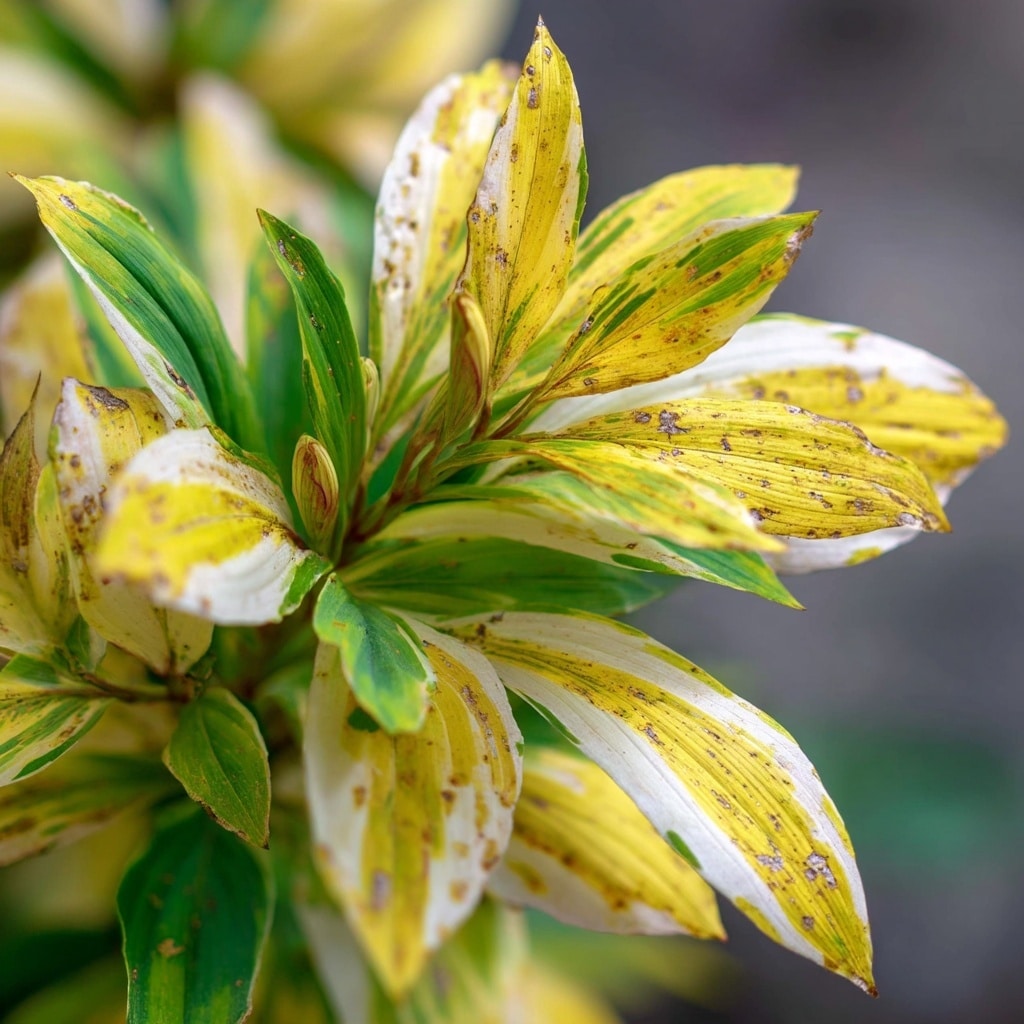
Even with proper care, lily flowers can sometimes run into trouble. Knowing how to spot and treat issues early will help your plants stay healthy and bloom year after year.
🐞 Aphid Infestations
Aphids are tiny insects that love the tender stems and leaves of lilies. They suck sap from the plant, causing curled leaves and stunted growth. If you notice a sticky residue or clusters of tiny bugs, it’s time to act.
Fix: Spray with insecticidal soap or neem oil weekly until the infestation clears. Encourage natural predators like ladybugs in your garden.
🍂 Yellow or Browning Leaves
When leaves turn yellow or brown, it often signals a problem with watering or nutrients. Too much water can cause root rot, while too little leads to dehydration. Over-fertilizing can also burn the roots.
Fix: Check your watering routine and adjust if needed. Use a balanced, diluted fertilizer and ensure your soil drains well.
🌸 Drooping Flowers
Some lily flowers produce large, heavy blooms that can weigh down their stems. Without support, they may bend or break—especially after a rain.
Fix: Stake tall lilies early in the growing season. Use soft ties and adjustable supports to hold stems upright without damaging them.
Addressing these common problems promptly will help your lily flowers stay vibrant, upright, and ready to rebloom season after season.
Popular Types of Lily Flowers
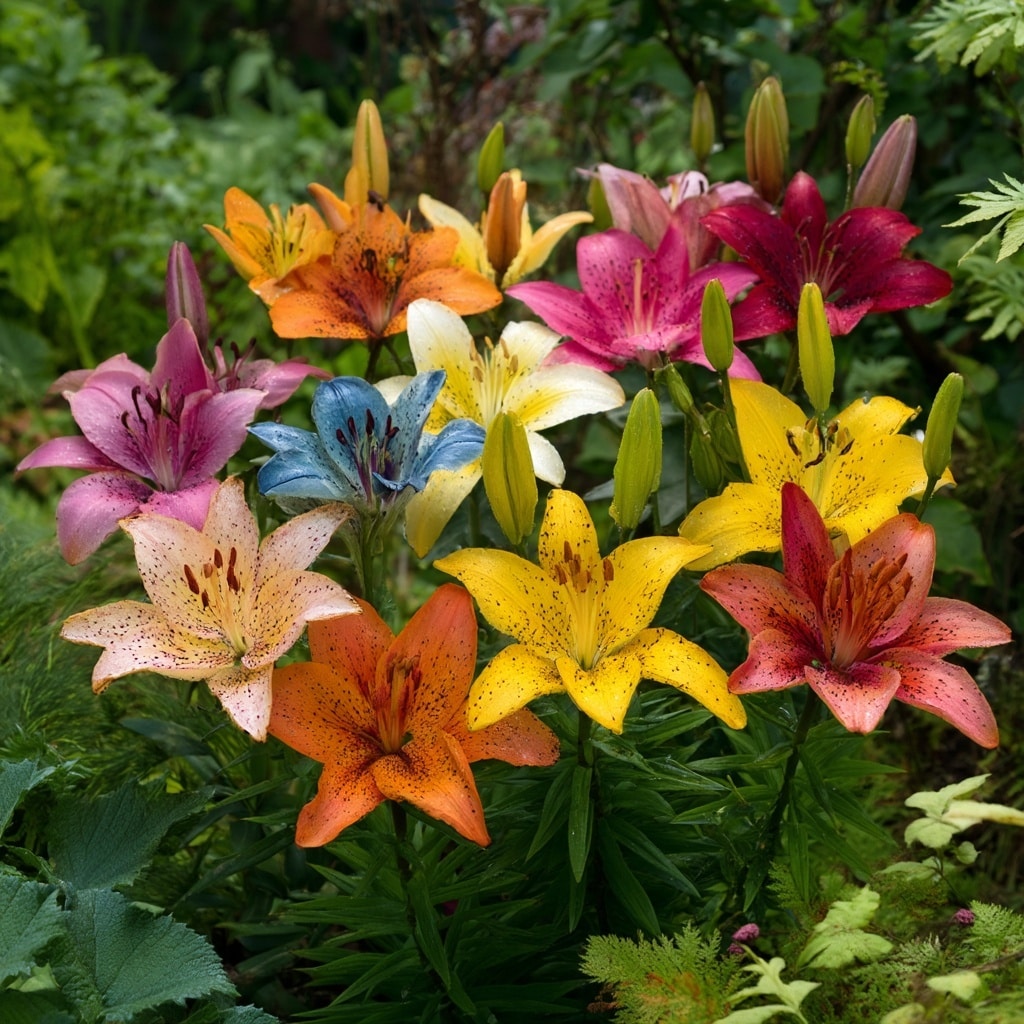
With so many stunning varieties to choose from, picking the right lily flowers depends on your space, climate, and scent preference. Here are six beloved types to consider:
🌸 Asiatic Lilies
- Best for beginners
- Early bloomers (late spring to early summer)
- Come in vibrant colors like red, orange, yellow, and pink
- Typically unscented but very hardy
- Grow 2–4 feet tall
Asiatic lilies are easy to grow and offer striking colors. They’re perfect for borders or container planting.
🌺 Oriental Lilies
- Strongly fragrant
- Bloom in mid to late summer
- Feature large, showy petals often used in floral arrangements
- Usually white, pink, or red
- Grow 3–6 feet tall
Their sweet scent and dramatic blooms make Oriental lily flowers a garden showstopper.
🌼 Easter Lilies (Lilium longiflorum)
- Typically grown indoors
- White trumpet-shaped flowers
- Symbolic during spring holidays
- Can be replanted outdoors after blooming
They require bright, indirect light indoors and do well in warm climates if planted outside.
🐯 Tiger Lilies (Lilium lancifolium)
- Orange flowers with dark spots
- Hardy and low-maintenance
- Blooms hang downward in midsummer
- Grow up to 4 feet tall
These bold lily flowers add a touch of the exotic to any garden.
🎺 Trumpet Lilies
- Named for their trumpet-shaped blooms
- Highly fragrant
- Come in white, yellow, pink, or bicolor
- Bloom in midsummer
- Tall: 3–6 feet with many blooms per stem
They combine the fragrance of Oriental lilies with the toughness of Asiatics.
🧡 Turk’s Cap Lilies (Lilium superbum)
- Wildflower-like blooms with petals curled back
- Rich orange-red color with speckles
- Loved by pollinators like hummingbirds and butterflies
- Can grow up to 8 feet tall
Ideal for gardeners wanting a natural, wildlife-friendly look.
Choosing a mix of these lily flowers lets you extend the bloom season and create layers of color and texture throughout your garden.
Lily Flowers FAQs

Are daylilies the same as true lily flowers?
No — daylilies and lily flowers are different plants. True lilies (genus Lilium) grow from bulbs and produce long-lasting blooms, while daylilies grow from fleshy roots and each flower typically lasts just one day.
Can lily flowers grow indoors all year?
Yes, but they need a dormant period to bloom again. After flowering, indoor lily bulbs should rest for 8–10 weeks in a cool, dark place. Without this rest, they likely won’t rebloom.
Will lily flowers return every year?
Absolutely. Most lily flowers are hardy perennials that come back each spring if planted in the right conditions. Leave the foliage in place after blooming so the bulb can store energy for the next season.
Are all flowers with “lily” in their name true lilies?
Not quite. Plants like peace lilies and lily of the valley are not true lily flowers. Only members of the Lilium genus—such as Asiatic, Oriental, and Easter lilies—are considered true lilies.
Can I grow lily flowers in containers?
Yes! Choose compact varieties and pots with drainage holes. Just ensure they receive enough sun and aren’t overwatered. Container lilies may need more frequent watering than garden-grown ones.
Conclusion
Lily flowers are one of the most rewarding plants you can grow, whether in a garden bed or on a sunny windowsill. With their stunning colors, sweet fragrance, and reliable yearly blooms, they bring beauty and elegance to any space.
By planting them at the right time, providing the right sunlight and water, and addressing common care needs, you’ll enjoy healthy, vibrant lilies season after season. Whether you’re drawn to the bold Asiatic types or the graceful scent of Oriental varieties, there’s a perfect lily for every garden.
Want more gardening tips? Browse our other articles on perennial care, container planting, and pollinator-friendly flowers.

